A frozen lake known to many as a stunning tourist destination with breathtaking scenery, located at an altitude exceeding 5000 meters above sea level in the Himalayas, transforms into a strikingly different sight each summer when the ice thaws: a mass grave containing over 800 skeletons dating back thousands of years. What events transpired here?
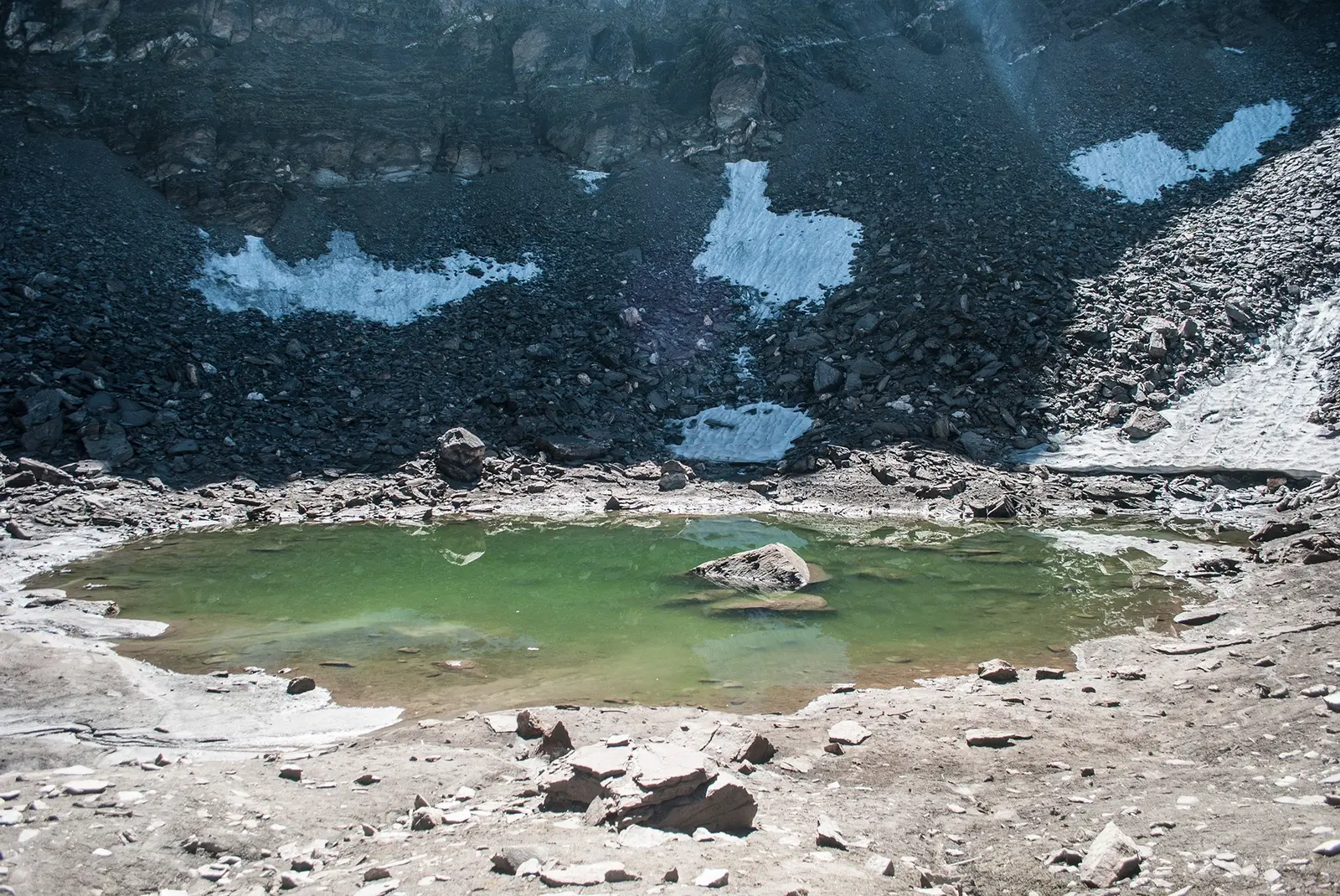
The Mystery of Roopkund Lake
Roopkund Lake, now famously referred to as Skeleton Lake or the Lake of Skeletons (also called the “Mystery Lake” by locals), is a glacial lake in Uttarakhand, India. Situated in the shadow of the Trishul massif, this lake is renowned for the hundreds of human skeletons found within it.
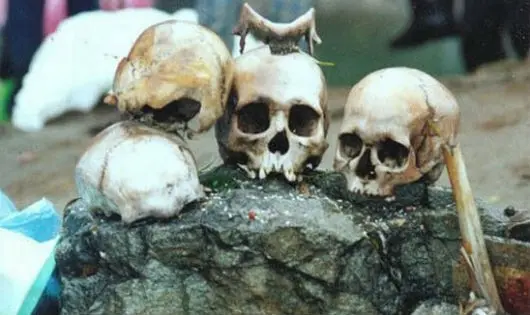
A Grim Discovery
Nestled in a remote valley in the Himalayas at an elevation of approximately 5,029 meters (16,499 feet), the lake is shallow, with a maximum depth of around 2 meters, and is encircled by glaciers and snow-capped peaks.
This natural marvel attracts adventurous tourists keen to explore and admire its beauty. Each May, as the ice melts, the shallow lake bed reveals its macabre secret: hundreds of mysterious skeletons.

In 1942, this startling mystery came to light. Over 200 human skeletons were found in one section of the lake bed when the summer ice melted, causing the skeletons to float to the surface and scatter around the lake. This eerie scene suggested a tragic event, as many of the skeletons were remarkably well-preserved.
Further investigation revealed over 800 human skeletons of various sizes within Roopkund Lake, creating a worldwide sensation. The fact that such a vast number of skeletons existed in an uninhabited, isolated lake was truly astonishing.
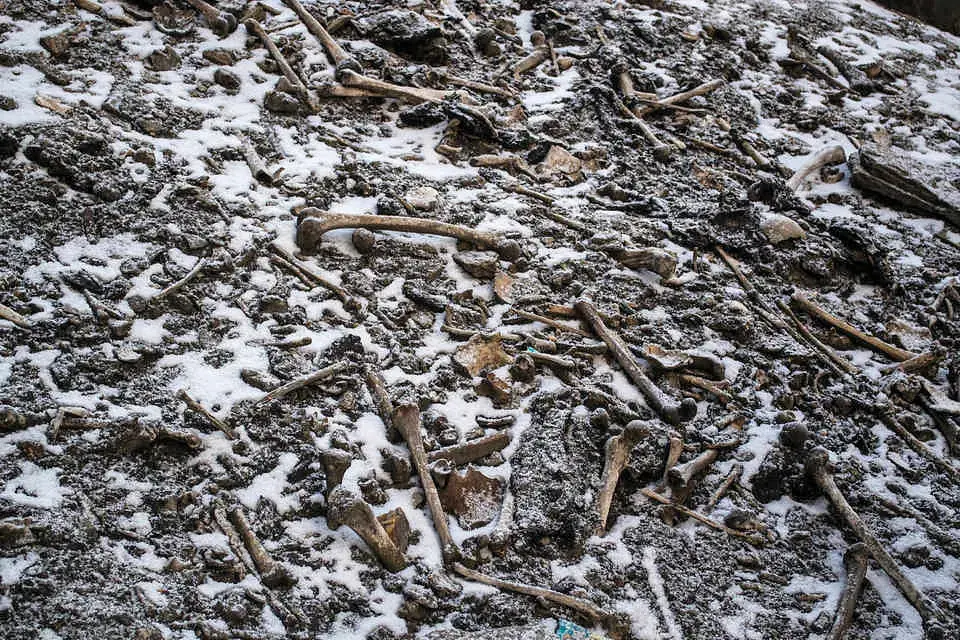
Theories and Speculations
The skeletons, preserved in the dry, cold air, retained skin, hair, and bones, remaining almost intact. However, their origins and the circumstances of their deaths remain a mystery.
Various hypotheses have been proposed, including an epidemic, a landslide, or a mass ritual suicide. For decades, despite extensive research, the enigma of Skeleton Lake remained unsolved.

One theory suggested that the skeletons were the remains of Japanese soldiers who died fleeing to India during wartime. However, a British investigative team debunked this, stating that the bones predated the war.
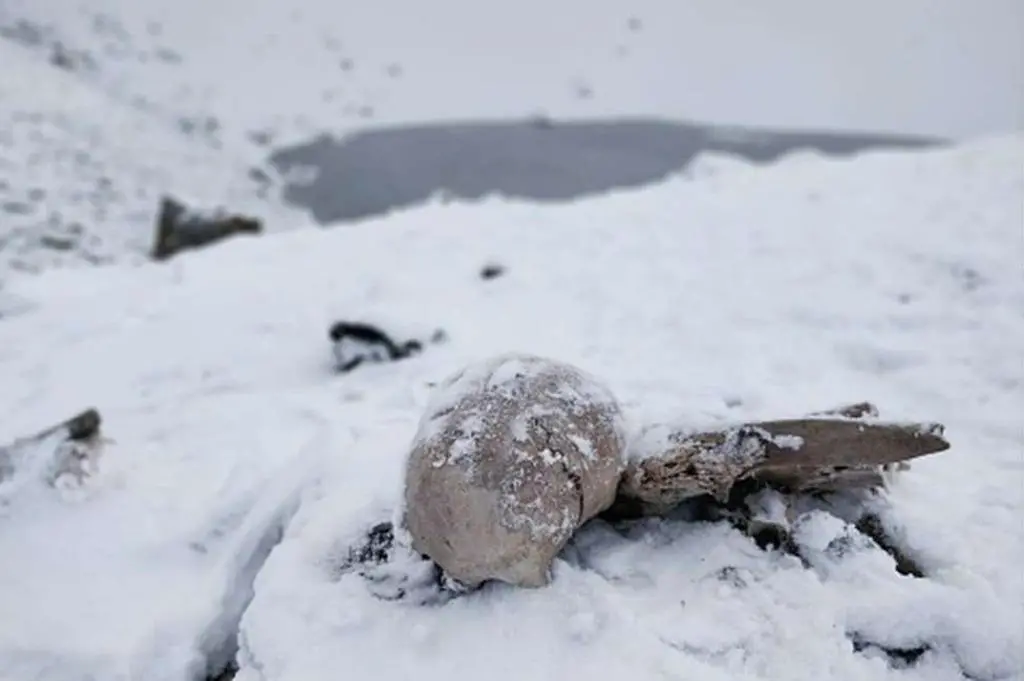
Many scholars and British investigators believed the skeletons belonged to General Zorawar Singh of Kashmir and his men, who perished in the Himalayas in 1841. Yet, radiocarbon dating in the 1960s disproved this theory.
Legends and Ancient Stories
According to ancient legend, the king of Kannauj, along with his queen, children, and courtiers, ventured into the Himalayas for a lavish feast. Their revelry offended the goddess Nanda Devi, who, enraged by their sacrilege, summoned a massive hailstorm that destroyed the group.
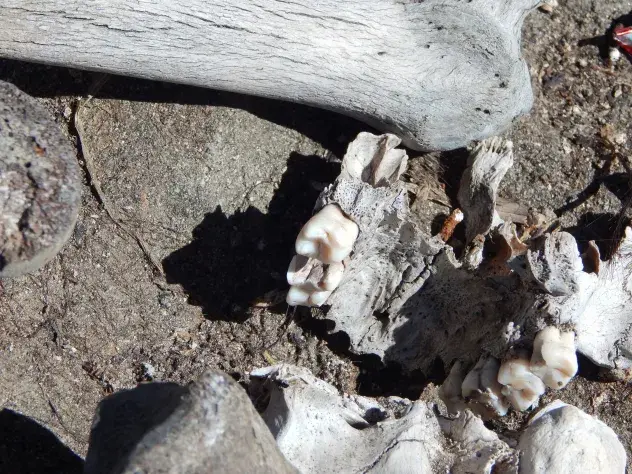
Due to the lake’s remote and harsh environment, most research has been limited to observations during the annual ice melt. In 2003, a collaborative effort by scientists from the Archaeological Department of Deccan College in India, German scientists, and the National Geographic Channel led to significant discoveries.
Unraveling the Cause
DNA testing on 31 skeletons with visible heads, hair, and nails revealed intriguing facts. These samples, analyzed at the molecular biology research center in India, showed that all individuals had small bone protrusions on their foreheads, a feature unique to residents of Maharashtra, central southern India.

Among the 31 skeletons, three samples had a rare genetic mutation found only in Maharashtra, indicating they were from the same family. This suggested that these people were related and originated from Maharashtra.
Additionally, the 800 skeletons were divided into two main groups: shorter individuals and significantly taller ones. Radiocarbon dating indicated these skeletons dated back to around 850 AD, over 1,000 years ago. The prevailing theory is that these were Indian pilgrims, with the shorter individuals possibly being local guides.
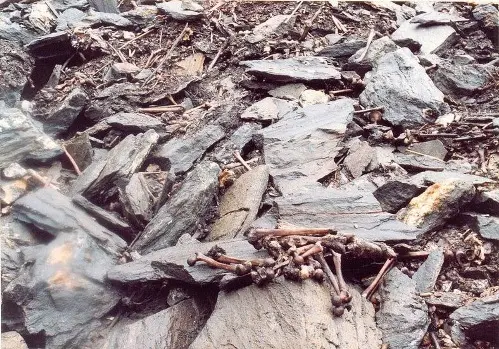
DNA analysis and skull fractures revealed that all individuals died from a fatal blow to the back of the head by a round object, likely large hailstones traveling at high speeds. This suggests an unexpected hailstorm with massive hailstones struck, leaving the group no time to seek shelter, resulting in their deaths. Some survivors likely succumbed to starvation and cold.
The preservation of these ancient skeletons in the ice and snow of Roopkund Lake has kept them remarkably intact. This explanation is considered the most plausible to date.
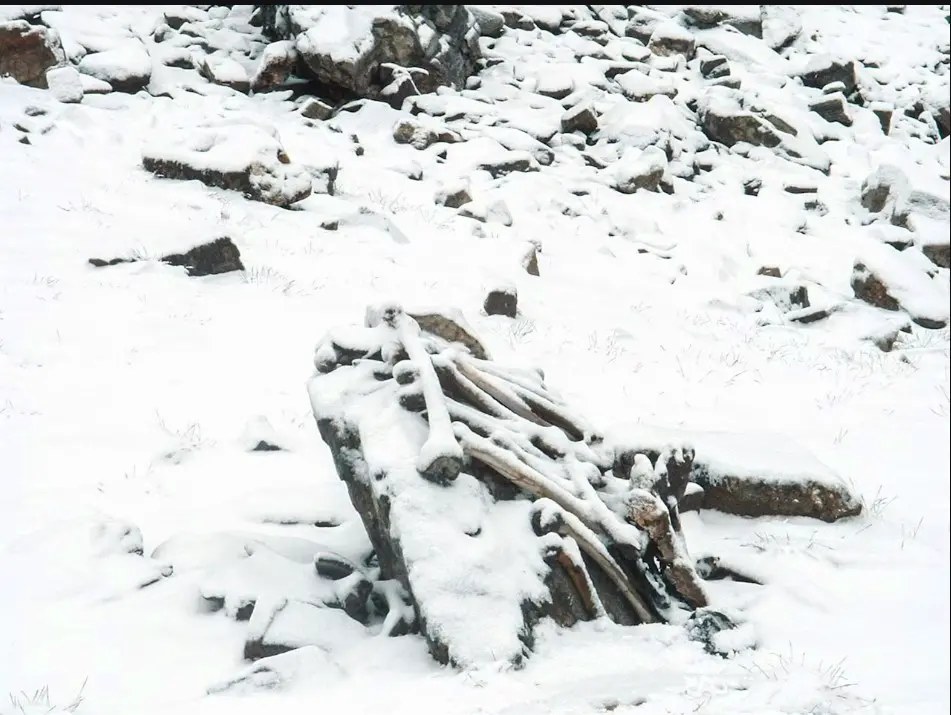
Continuing Fascination
The mysteries of Skeleton Lake continue to captivate many. Roopkund Lake, visible only once a year, attracts explorers eager to witness this unique site. As a place where hundreds perished due to a natural disaster, it is also regarded as a sacred site, prompting concerns about the preservation of the skeletons.
Many tourists visit to see the remains, with some even taking bones as souvenirs. Therefore, efforts are necessary to protect this area as an eco-tourism site to ensure the remains are preserved for future generations.




